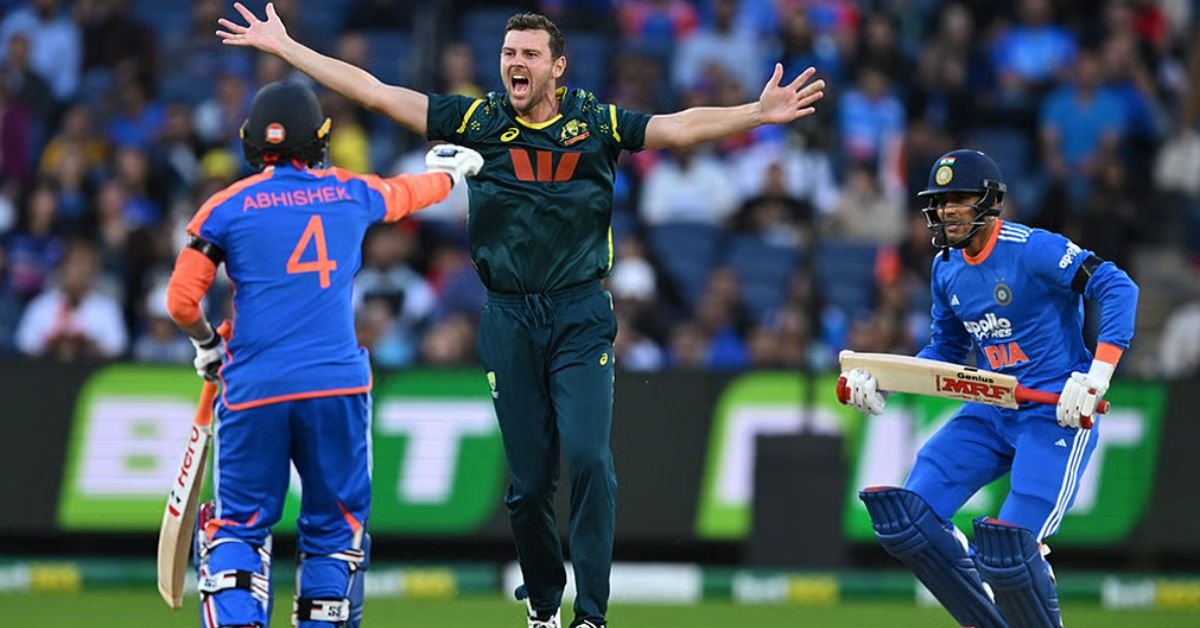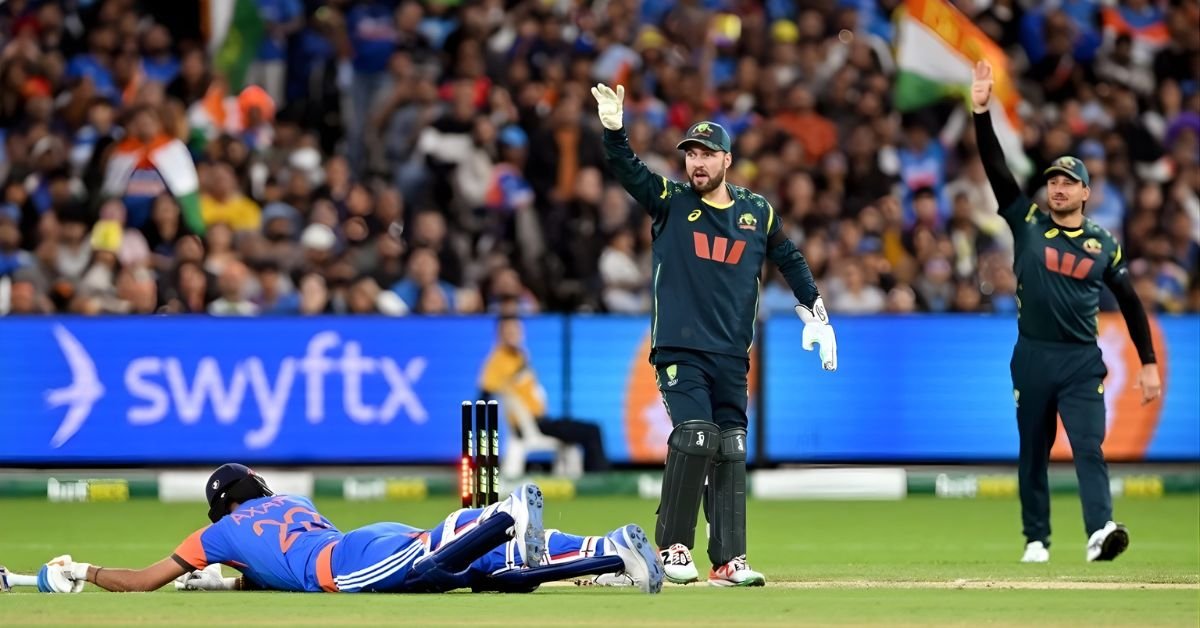A football ground is rectangular in shape, designed to create the perfect balance between movement, visibility, and fairness. Every professional match you see, whether it’s the FIFA World Cup or your local club game, takes place on this rectangular field marked by clear boundary lines and precise proportions. When someone asks, “What is the shape of a football ground?”, the answer is simple yet significant: it’s a well-defined rectangle crafted to ensure equal playing conditions for both teams. This structured design enhances gameplay flow, supports strategic positioning, and provides an unobstructed view for players, referees, and spectators alike.
Table of Contents
ToggleUnderstanding the Basic Geometry of a Football Field
A football field might look simple at first glance, but its geometry is built on precision and balance. Every line, curve, and boundary on the ground follows specific measurements that shape the rhythm of the game.
- The rectangular shape of a standard football ground:
A standard football ground is rectangular in shape, with longer sides called touchlines and shorter sides known as goal lines. This rectangular layout is not just tradition; it’s science and strategy combined.
- The significance of dimensions and proportions:
The dimensions and proportions of a football ground play a vital role in how the game unfolds. Every meter on the pitch influences player positioning, passing accuracy, and overall strategy.
Why Do Football Grounds Have a Rectangular Shape?
The rectangular shape of a football ground isn’t a coincidence; it’s a carefully designed structure that enhances the game’s balance, flow, and competitiveness. From the earliest versions of football in 19th-century England to today’s FIFA-regulated stadiums, the rectangle has remained the most efficient and fair shape for play.
Professional vs. Amateur Football Fields
| Professional Football Fields | Amateur Football Fields |
| Follow strict FIFA dimensions (100–110m length x 64–75m width). | Sizes vary depending on available space; not always regulated. |
| Use high-quality natural or hybrid turf maintained daily. | Often use basic synthetic or uneven natural grass with minimal maintenance. |
| Markings are machine-painted with exact measurements. | Lines are usually hand-drawn or faded over time. |
| Standardised goalposts (7.32m x 2.44m) and durable nets. | Goal sizes and materials may differ from official standards. |
| Have floodlights, locker rooms, seating, and broadcast facilities. | Limited or no infrastructure; often open fields or local grounds. |
| Employ certified referees and advanced technologies like VAR or goal-line systems. | Referees may be local, and matches rely solely on manual officiating. |
| Regular turf care, irrigation, aeration, and mowing for optimal conditions. | Maintenance is done occasionally by volunteers or clubs. |
| Used for international and league matches with thousands of spectators. | Used for local matches, training, or recreational play. |
Standard Measurements According to FIFA Regulations
Every professional football field follows FIFA’s official measurements, ensuring fairness and consistency across matches worldwide. These standards define how long, wide, and proportionate the ground must be, leaving little room for variation at the top level of play.
FIFA’s precise regulations also extend to specific areas:
- The goal area is 6 yards from the goalposts.
- The penalty area stretches 18 yards from the goal line.
- The centre circle has a radius of 9.15 meters to maintain distance during kick-offs.
Length and width of the football field
The length and width of a football field define its playing area and directly influence the game’s pace and strategy. According to FIFA’s official guidelines, a football ground must always be rectangular, with the length (touchlines) longer than the width (goal lines).
For international matches, the standard dimensions are:
- Length: 100 to 110 meters
- Width: 64 to 75 meters
For non-international matches, such as local or club-level games:
- Length: 90 to 120 meters
- Width: 45 to 90 meters
Goal Area, Penalty Area, and Centre Circle Measurements
While the field’s overall shape defines its structure, the goal area, penalty area, and centre circle define the zones where the most crucial moments of the game unfold. Each has its own dimensions that serve a specific purpose in maintaining fairness and order during play.
- Goal Area (Six-Yard Box):
This smaller rectangle is drawn 6 yards (5.5 meters) from each goalpost and extends 6 yards into the field. It’s where goalkeepers take goal kicks and where play restarts after certain stoppages.
- Penalty Area (Eighteen-Yard Box):
The larger box, known as the penalty area, extends 18 yards (16.5 meters) from each goalpost and 18 yards into the field. This is where the goalkeeper is allowed to handle the ball and where penalty kicks are awarded for fouls.
- Centre Circle:
Located at the midpoint of the field, the centre circle has a radius of 9.15 meters (10 yards). It ensures that opposing players remain the proper distance away during kick-offs, maintaining fair play and positioning.
Markings and Layout of the Football Ground
The layout is symmetrical, meaning both halves of the field are identical. This ensures that neither team has a spatial advantage, whether it’s in daylight, under floodlights, or facing different wind directions.
- Touchlines, goal lines, and halfway line:
The touchlines, goal lines, and halfway line are the three main boundaries that define the structure and symmetry of a football ground. Each one serves a unique role in maintaining fairness and flow during the game.
- Touchlines:
These are the longer boundary lines running along the sides of the field. The ball is considered out of play when it completely crosses a touchline, and play resumes with a throw-in.
- Goal Lines:
The shorter boundaries at each end of the pitch are called goal lines. A goal is scored when the ball completely crosses this line between the goalposts and beneath the crossbar.
- Halfway Line:
This line divides the pitch into two halves, ensuring symmetry for both teams. It’s where kick-offs start and restarts happen after goals.
- Centre circle and penalty arcs:
The centre circle and penalty arcs are two critical markings on a football field that ensure proper spacing, positioning, and fairness during key game moments like kick-offs and penalty shots.
- Centre Circle:
Positioned exactly at the midpoint of the pitch, the centre circle has a radius of 9.15 meters (10 yards). At kick-off, all players except the two taking the first touch must remain outside this circle.
- Penalty Arc:
Often called the “D” outside the box, the penalty arc forms part of an imaginary circle centred on the penalty spot, also with a radius of 9.15 meters.
- Corner arcs and goalposts:
The corner arcs and goalposts may seem like small details, but they’re essential elements that complete the design and functionality of a football ground. Each serves a unique role in ensuring consistency, fairness, and excitement during gameplay.
- Corner Arcs:
Located at all four corners of the field, each corner arc forms a quarter-circle with a radius of 1 yard (1 meter). This marking defines the area from which corner kicks are taken. The small radius ensures accuracy in placement and helps referees judge whether the ball is properly positioned during a corner.
- Goalposts:
Each goal consists of two upright posts and a crossbar, forming a rectangular frame at the centre of each goal line. The posts are 8 yards (7.32 meters) apart, and the crossbar is 8 feet (2.44 meters) above the ground. The interior is fitted with a net to catch the ball when a goal is scored.
Final Thoughts: The Perfect Balance of Design and Function
The shape of a football ground represents more than just lines and measurements; it’s the outcome of decades of refinement where design meets function. The rectangular layout, balanced proportions, and precise markings together create an environment where fairness, excitement, and strategy coexist. In the end, the football ground’s rectangular shape isn’t just a design choice; it’s a symbol of balance, unity, and universality, keeping the world’s favourite sport flowing beautifully, one match at a time.






